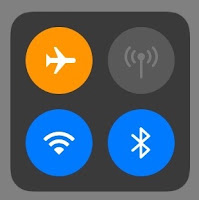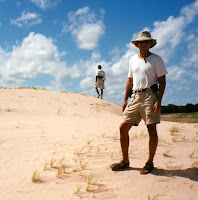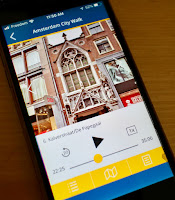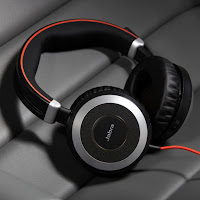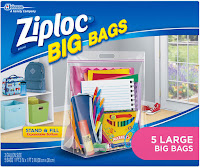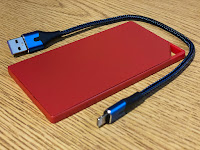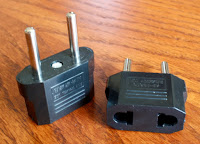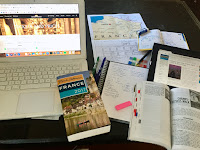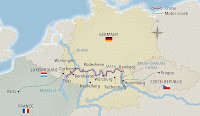Travel and Leisure
So you've found the right cruise operator, and a river to embark upon, but what now? What should you expect? Likely, you've booked an entire excursion through the tour company, and so from a travel logistics perspective, all you need to do is show up at your departure airport. But for those that may not have done so (e.g. booked airfare on travel reward points) there are a few minor details that you need to take care of yourself. Your tour organization will send out something with your booking confirmation as well; make sure you familiarize yourself with it and bring a copy with you.
Pre/post-cruise extensions
 |
| Prague is great for a cruise extension |
We highly recommend this for anyone who takes a river cruise, unless of course, you are the unfortunate folks who do not have more than a week to explore Europe. Whether you choose to do the extension with the tour company or not, is just a matter of personal choice, but there can be significant cost advantages if you do it yourself. We have found that most cruise operators' extension prices are relatively high compared to what you could book on your own, however you may want to consider that you will also get transfers to/from those cities and your hotel if you did opt to go with them. This can be hundreds of dollars; for example, if your cruise ended in Regensburg, Germany, you might get transfers to Munich airport included. But if you wanted to do your own post-cruise extension in say, Prague, you would have to pay for a private transfer to get you there. We looked into this, and since the disembarkation point was not serviced by rail, you would have only coach or private taxi as options, which are a significant cost. A Prague post-cruise extension booked with the tour operator would include that 3-hour coach transfer, a welcome reception/orientation meeting at the hotel, and likely a city walking tour. Obviously your pre/post-extension city choice is largely determined by your river cruise itinerary; choosing a direction for your cruise may not be an option, but given the choice of starting in say, Amsterdam versus Basel, we'd opt for the former, as there are more things to do in a large city with a couple of days to explore. We almost always like to do our own pre-extension to help get over the long flight from North America; we've seen many travellers struggling to stay awake for that first evening's orientation meeting and dinner. If you've done your own pre-cruise extension, you'll need to get to the ship on your own on embarkation day; often, you can just walk down to the river, and you'll see your ship. Most taxi drivers will know where to take you, or you can go to
cruisemapper.com to find where your boat is moored.
What to wear
I'm not going to tell you how to pack in this post (might create something on another day - edit: for you guys,
here it is), but here are some suggestions for a river cruise specifically. Obviously, you should be Googling the historical weather for the ports along your cruise, and checking the 14-day forecast prior to the trip, to ensure you are not over-packing or short-changing yourself on warm clothing.
- Packing light is the best rule-of-thumb for European travel in general; most river cruise staterooms have limited closet space. Once you have unpacked your clothing, you can store your luggage under the bed. With the recent travel issues, going with carry ons is probably a good idea; I've discussed our luggage options in detail here.

You will be doing quite a bit of walking each day; European streets are often lined with uneven cobblestones, and the sidewalks may be just as bad. While those heels may look stylish, they are a very bad choice for day excursions. I opt for a sturdy but lightweight pair of walking shoes that have decent cushion in the soles. I regret the time that I tried to be fashionable and brought a pair of flat-bottomed shoes with very little cushioning; my feet were so sore by the end of each day! Equally bad would be a pair of flip-flops; unless you are planning a beach pre/post-extension, you won't need them. One person in our Lisbon travel group wore flip flops on our walking tour, and had rubbed the skin off her feet within the first half an hour walking on the cobblestone streets. I then bring a second pair of leather loafers that are a little more dressy for wearing to dinner and/or going out in the town at night; she will bring a couple of options that are appropriate for dining and evening wear.
- Obviously the locale and time of year will determine your outerwear choices, but at a minimum we like to bring lightweight/packable rain jackets and compact umbrellas. You could be an hour's walk away from the ship, like the time we were in Budapest and were suddenly caught in a deluge - wouldn't it be nice to pull out an umbrella or slip on a rain jacket? Small is the key: not having it with you in your daypack or shoulder bag isn't going to help keep you dry when it starts to pour, and you end up running through the streets of Budapest to avoid it.
 |
| Credit: Arcteryx.ca |
- Similarly, a packable "puffy" jacket is a great option when it comes to the shoulder seasons (April/May and Oct/Nov). Mine doesn't have one, but sometimes a hood can be handy, just in case you get caught in a drizzle; it can double as both a wind-stopper and keep your head dry too. Paired with the aforementioned rain jacket, you're probably covered for inclement weather, unless you are doing the Christmas Markets cruise.
- For you ocean cruisers, leave the tux and evening gown at home - you won't need them on a river cruise; there isn't a gala on board that will require black tie evening wear. The Captain's Dinner is the most formal dinner you will have, and some men like me simply throw on a blazer, others wear just a clean, collared shirt and slacks or chinos. Women usually put a dress on, but won't be out of place with pants and blouse either.
- For all other evenings and daytime onboard the ship, "country club casual" is typically stated by the operators; e.g. smart casual is fine. Of course shorts and t-shirts are going to be expected walking around European cities on hot summer days, but don't be that guy on our Danube cruise who wore a tank top for breakfast, lunch and dinner on board. If you are planning on visiting churches or cathedrals, long pants may be necessary, as well as short-sleeved, collared shirts (no tank tops).
- As for non-clothing essentials, I created another post listing the other stuff I bring along; some things won't be relevant for a river cruise (e.g. picnic supplies, coffee/tea).
Planning your day
Yes, that is correct. You are in charge of your day in each port. Sure, there will likely be an included walking tour for you to participate in,
but you don't have to. As I detailed in my
"day in the life" aboard a river cruise post, you typically only have 1.5 - 2 hours of scheduled things on your agenda... the rest is up to you to decide what to do. Some folks on other FB groups complain about river cruises being boring; I'd suggest that is because they left it up to the cruise operator to entertain them for the whole day. Expect to use your own resources and knowledge to plan the rest of your day in each port, as
I describe in this post. Maybe it means foregoing lunch back at the ship, or perhaps you want a special dinner in Vienna. Evening port briefing? You don't need to rush back to the ship for that; your new cruise friends can update you on any important items you might have missed. Whatever it is, you should be researching these things on your own, either now, or at the very least, the night before you arrive in a new port.
Inclusions and Extras
It is important to understand what your tour operator has included with your river cruise excursion, as it does vary. We have found that the majority of the premium cruise lines include most of the things you will be doing on your respective itinerary. However, things to be aware of that may or may not be included with your quote price are:
- Port charges: usually identified in the costs and paid upfront
- Alcoholic beverages: you will typically be served beer and wine with dinner (and most with lunch), but are an additional cost in the lounge, including soft drinks. As I've discussed in other posts, you don't spend a lot of time on the ship, either admiring the view from your balcony, or hanging by the pool (if so equipped) pounding back strawberry margaritas. Some offer drink packages, but you are probably better off buying the odd cocktail à la carte.
- Optional excursions: very few operators charge for each day's morning tour, but sometimes a separate excursion or evening activity is offered for at additional cost. These typically range in price from $60 - $100, depending on how much time is required on a bus.
- Transfers: usually included if airfare is booked with the tour operator, but expensive from the operator if purchased separately. Some operators include transfers even if you have not purchased airfare through them (e.g. Emerald); these will only be available for embarkation and disembarkation days. e.g. If you've booked your own pre-/post-cruise extension, expect to have to coordinate your own transfers. We've used taxis or trains to get to/from the ship and saved money vs. booking with the cruise company.
- Meals: from the time you board your ship till you disembark, meals will be included. Other meals that are included for pre- and post-extension should be identified in your itinerary, but it is usually only breakfast that is included at those hotel(s).
Tipping
This is one of the things that is worth talking about beforehand. With respect to tipping on-board, every cruise operator has slightly different procedures; some do one big, shared group tip at the end, some separate crew from Cruise Director and Entertainment Assistant (I've learned that this is because they are contractors, not employees), some allow for credit card, others are cash only, in local currency. There are even some operators that allow for pre-payment of tips, which seems kind of strange, when tipping is supposed to be representative of the services received. Other higher-end cruises include tips in your fare, which takes out the guesswork, but you are still paying for it. Anyhow, the welcome letter or package you will receive with your booking usually outlines their tipping guidelines, so make sure you read it or bring it along. River cruise tipping ranges from $15-20 USD per person, per day, but is of course always at your discretion. I find that Americans in general, over-tip in Europe, and as such, these operators have become accustomed to that level of tipping. However, service on-board river cruises is usually exceptional, so it is not without merit.

Pre/post-extension days follow normal European tipping rules for restaurant services, tour hosts, bus drivers, chambermaids etc.; again, this is Europe, and typical American-style tipping is not required or expected. e.g. 20% tip at a meal is
unheard of. Most local restaurants aren't even expecting 10% for meals; some places are quite modest, and you would only leave the remainder of the bill rounded up; e.g. if the total bill were 37.80€, you would simply leave 40€. But since ships traverse a number of countries over one sailing, it is a fair question to ask your Cruise Director as to any regional tipping advice; e.g. in France, you don’t tip at all. Finally, for the daily tour guides, a 1€ to 2€ tip is typical for a ~1.5 hour walking tour. This is usually expected in the local currency, which leads to my next sub-topic.
Local Currency/Coins
One of the unfortunate things about most river cruise ships, is that they operate on a cash-less basis; i.e. they don't require any cash payments (except tips sometimes), so passengers can use credit for everything. As such, unlike a traditional hotel, they typically cannot exchange currencies for you, nor can they provide small change, for the aforementioned tour guide tips. This is a small irritation, as some of you will literally be arriving that day from your North American overnight flight, and have had no opportunity to visit a bank or exchange, let alone make change. I like to beg/borrow/steal a handful Euro coins from friends or family that have recently been to Europe; as you probably know, only foreign currency bank notes can be converted back to dollars when you return home, so everyone always ends up with loose coins rattling around in their sock drawer.

There are bank machines virtually everywhere you will go in Europe, but beware - some places charge an exorbitant fee for local currency transactions! Avoid any generic-looking, kiosk-style, cash machines sitting in lobbies of restaurants or pubs. Look for machines that are either attached to an actual local bank, or have the name of the financial institution clearly labelled. You will pay a small transaction fee for these machines, as well as one with your local bank, so try not to make many small withdrawals. Canadians beware: most credit cards will charge up to 3.5% additional on the exchange rate! As such, I usually like to get 200-300€ from my own bank at home, where I get the best exchange rate, and then top up at the local machines in Europe as necessary. The pandemic has made cashless transactions much more prevalent in Europe, but some cash may still be required. Sometimes, there are multiple currencies involved (e.g. Czech Koruna or Hungarian Forint), so rather than get those at home, I'll bite the bullet, and get running-around-money from the in-country machines. Note that you are better off to let your home bank do the currency exchange versus the offered rate by the local bank machine or when using your credit card when you are offered the choice on the screen.
Safety and Security

While you are on the ship, you will feel as safe and secure as you would in your own home. I've never had any concerns with anyone stealing from us, but she still makes me lock our passports in the in-room safe regardless (a habit everyone should really get into). Around town, you should take the obvious precautions, like not putting your wallet in your back pocket, or leave your purse or belongings unattended, but I have never gone to the extent of using a money belt etc. Again, your Cruise Director will advise you of places to be wary of, but for the most part, your ports of call will be as safe as a large North American city. Leave your fancy jewelry and the Rolex at home; I travel with a simple, classic Timex that doesn't scream "I have money", and if it were to get stolen, no biggie. If going to a high risk area like Las Ramblas (Barcelona), Trevi Fountain (Rome) or pretty much any tourist zone or the Metro in Paris, you need to really be on alert.
I normally tell people that the key to safety in foreign cities, is to try and blend in. But with river cruises and guided tours, that is nearly impossible. Not only do you stick out like a sore thumb with your branded lanyard and name tag dangling around your neck, but there will be a tour guide with a sign on a stick, held high in the air, walking around with your group of 20 or so other passengers. However, when you have separated from the rest of the group and are wandering the city centre on your own, try to look like a traveller, not a tourist. Take your lanyards off, and walk with purpose in crowded spaces; know where you are going before setting off, and be aware of your surroundings. Avoid random strangers and children that approach with something or other; this is often a distraction while their partner slips into your backpack.
Mobile Phones and Wi-Fi
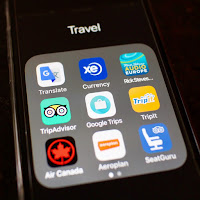
As with all overseas travel, it is highly recommended that you do not use your mobile phone if/when it connects to the local carrier, as you will likely incur huge roaming fees, both for voice and data. There are some exceptions, as carriers such as Verizon have international rate plans that cover you in most of Europe, for reasonable fees. For everyone else, there will be a setting or option for you to turn off data roaming on your phone, but sometimes in order to effectively turn off roaming completely, you should use Airplane Mode. Then by simply enabling Wi-Fi, you can use services on the ship or local establishments for connecting to the internet. We have found that most ships include Wi-Fi for free; even when stated that it would only be available in common areas, it was still be accessible from our room. Be aware that when the ship is at sail, Wi-Fi is often not available. If you really need to reach someone back home, try using apps like FaceTime, Skype or WhatsApp, using Wi-Fi, not your phone's data roaming.
Update: most carriers offer Wi-Fi Calling now, so that is a great way to make calls in Europe. If you're a power user, and absolutely need to stay connected while in Europe, get yourself a local SIM card instead; if you’ve got a newish phone,
you can get an eSIM much easier.
There are great apps to use while you are travelling in Europe, but some may require data downloads to be more effective. Try to get these when you are at home, on high-speed connections, as the ship's service will not be especially fast or reliable. Some great tools are TripIt for itinerary organization,
Rick Steves' Audio Europe App for self-guided walking tours, XE.com for local currency values, TripAdvisor for restaurant suggestions, and Google Trips and Translate for everything else. Try to avoid apps that use your smartphone's GPS capabilities, as these will drain your battery very quickly! Update:
I wrote a more detailed piece on mobile use here.
Electricity and Travel Adapters
For most of us, we are using devices that already have a voltage converter built into the power supply for our electronic devices; i.e. your iPad and mobile phone charger can accept voltages that you will find in Europe and on your ship. What you may need however, is a simple plug adapter that converts the standard North American, two-prong plug to the European two round pin plug.
 |
| Only some devices need a converter |
You can easily find them online, like
these from Amazon. Even if you have a travel converter, you might still need these little adapters, as some sockets in Europe are recessed, and you need the adapter to "extend" the plug. I like to carry at least two, so that we aren't stuck when two devices run out of juice. Of course, a great option to make sure your iPhone doesn't run dry during your walking tour, bring along a rechargeable power pack. If you have a device that does not have it's own step-down power supply, you will indeed need a travel converter; make sure that you get one that is rated for the wattage of the device you are bringing. e.g. a hair dryer is going to require a higher power one than say a curling iron. For curling/flat irons, you're likely better off getting a new, dual-voltage model on Amazon. I like to keep all of these electronic accessories in a small, easily accessible pouch or organizer, as
discussed here.
Have I missed something important? Let me know!
Back to Where and with Whom Next: A Day on a River Cruise
Edited July 2022
No endorsements or fees have been paid by tour operators or river cruise companies for this post.

 I've already mentioned a few apps that are great for travel; Rick Steves' Audio Europe, Google Maps, and Google Translate. Update: For local offline navigation, try Maps.me - while Google Maps offline was good most of the time on a recent trip to Portugal, sometimes it could not route properly without a connection. TripAdvisor is also very useful, and seems to be more popular than Yelp for restaurant recommendations in Europe. I started using TripIt when I was still working, and I find it great to keep track of our travel information and reservations, without having to pull out photocopies of our itinerary etc.
I've already mentioned a few apps that are great for travel; Rick Steves' Audio Europe, Google Maps, and Google Translate. Update: For local offline navigation, try Maps.me - while Google Maps offline was good most of the time on a recent trip to Portugal, sometimes it could not route properly without a connection. TripAdvisor is also very useful, and seems to be more popular than Yelp for restaurant recommendations in Europe. I started using TripIt when I was still working, and I find it great to keep track of our travel information and reservations, without having to pull out photocopies of our itinerary etc. 
